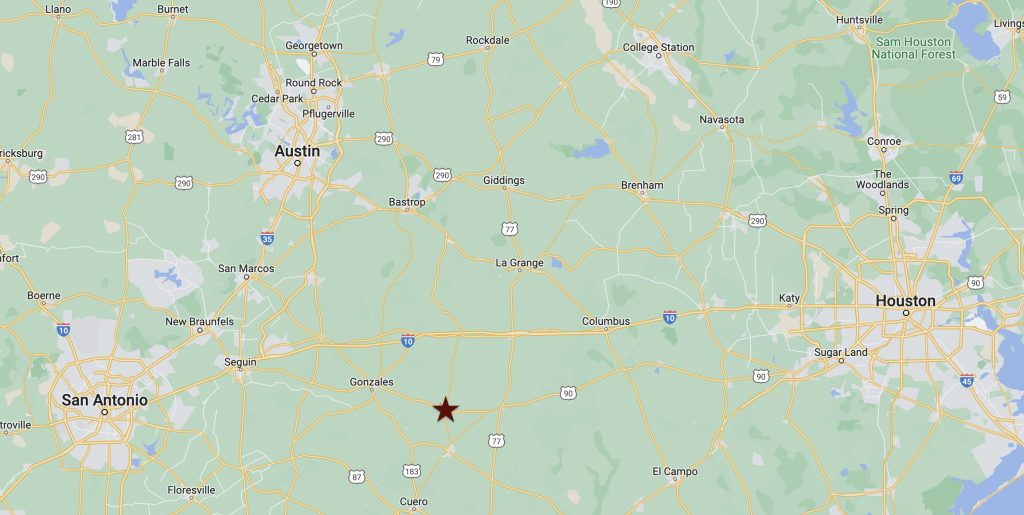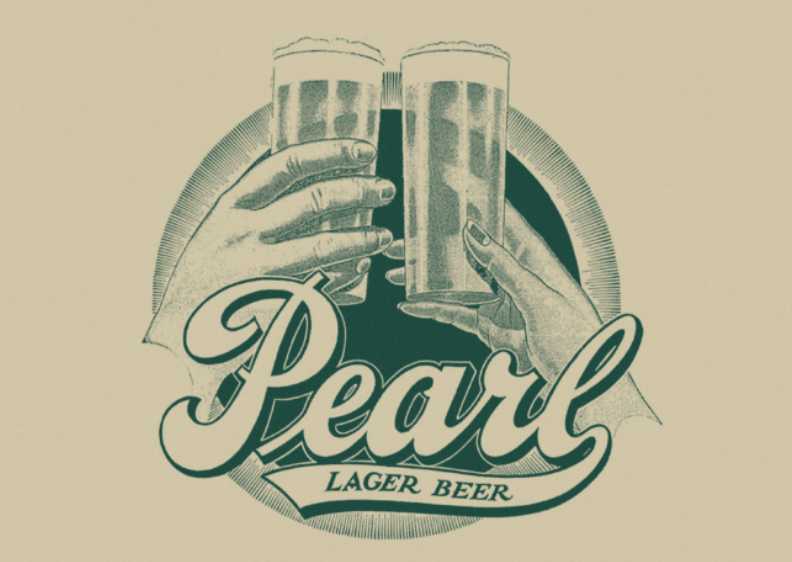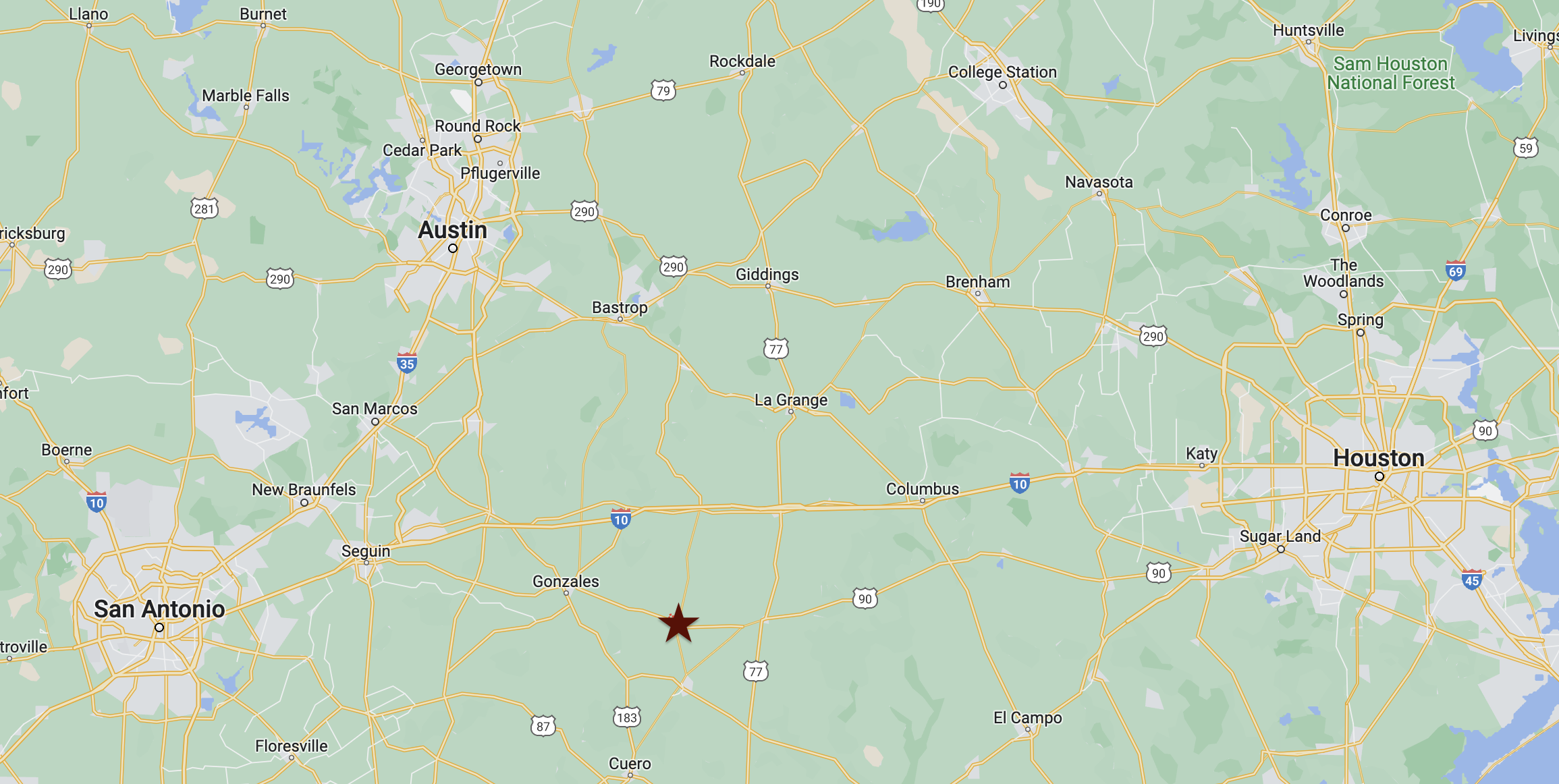Adolf Hofner’s music career would begin in 1936, but surprisingly “Shiner Song” was recorded later in his career with his Czech-Western band named “The Pearl Wanglers”. Shiner Song has a long history as its foundation rests on an old Czech ethic tune “Farewell to Prague”. Its lyrics changed to bring pride to Shiner, Texas, A small little town in Lavanca County and one of the most iconic spots for unique Texas Czech music and beer! However Hofner’s Shiner Song specifically avoided the mention of the town of “Shiner”. Unlike other Czech-American bands, Hofner used Prague instead of Shiner to appease their sponsor, Pearl Beer.
Original Czech Lyrics:
Když jsme opustili prahu, slunce svítilo :/
/: Piva bylo dosti a jídla do sytosti :/
Když jsme opustili prahu, slunce svítilo.
Když jsme opustili pivovar, bečka byla prázdná :/
/: A my jsme popíjeli a dobře jsme se měli :/
Když jsme opustili pivovar, bečka byla prázdná.
English Translation:
When we left Prague, the sun was shining :/
/: The beer was plentiful, and the food was filling :/
When we left Prague, the sun was shining.
When we left the brewery, the beer keg was empty :/
/: And we had drank a lot, and we felt real good :/
When we left the brewery, the beer keg was empty.
(Key :/= Repeat to beginning of phrase /: ( ) :/= Repeat everything in between)
Czech Czech… One Two…
You enjoy that pun? Good, because the start of this story is a bit of a downer.
You may be wondering why Czechs came to Texas? The answer unfortunately stems from their oppressive home. Modern day Czechia, or historically referred to as Bohemia, was part of the The Austrian Empire during the 19th century, one of the last government bodies in Europe still practicing Surfdom. Looking to protect self interests, The Austrian Emperor decided he’d start a conquest to capture as much of the surrounding land as possible before revolts became successful enough to surround the country with democracy and self government. At this time, Austrians were looking to escape being drafted into the Austrian Army. Rather than pledging loyalty to the Austrian empire and being sucked into the conquest, they opted for leaving the country and Texas was one of the destinations for immigrants fleeing the empire.

For a while it was hard for Czechs to settle in Texas, but after decades of tenant farming (renting farmland), they were able to start profiting off cash crops (corn and cotton). By 1930 there were 300,000 Czech people living in Texas. It is important to note as well that the these Czech immigrants found it extremely important to keep their culture intact. Newspapers were printed in Czech, many schools taught both Czech and English, and Czech stories and folklore were passed down onto generations.
Ok So.. What About the Music?
Before we talk about Shiner Song and Hofner, its important to first understand the influences of music that are intersecting in this song!
Western Swing is important to the context of shiner song as it was one of the most popular music in Texas being performed in the late 1930s. Manifesting in Fort Worth by Bob Wills and The Light Crust Dough Boys, the genre was a mixture of the jazz improvisation and instrumentation with the instruments most associated with hillbilly music such as the fiddle and the guitar. One of the most important aspects of this music was that it was made for the “dance hall”, music venues that included large open dance floors in front of the stage and a bar. The iconic sounds of western swing include a guitar that strums on the “backbeat” or beats 2 and 4 to while the kick drum plays on beats 1 and 3. This constantly keeps the song moving even while improvised melodic phrases played by the fiddle or a second guitar provide variation to the tunes basic song structure. Here is a great example of western swing performed by Bob Wills and His Texas “Playboys”.
Polka is a also form of dance that was popular among the peasant class in Czechia and became popular right around the time Czech immigrants began to arrive in Texas. The button accordion is the foundation of this music along with brass instruments and fiddles. Polka is infamous for its duple time signature meaning that rhythmic phrases happen in beats of two, instead of traditional European signatures usually having three to four beats per measure. “Farewell to Prauge” was originally a Polka tune, and you can hear the same melody played by Polka musicians in the video below. You can hear the influences of the duple time signature as the kick and snare happen beat after beat.

Before the mid 20th century, Hofner was primarily a country singer. In fact, he was even credited as “country music’s Bing Crosby” for the records he made with his brother as “The Hofner Brothers”. Wanting to find the bridge between his Czech heritage and his love for western music, Hofner took the foundational instruments and rhythm found in western swing, and combined it with his second language, Czech, and the Polka “Farwell to Prauge”. “I was about the first guy to put a country music sound to German and Czech music and to this day it follows me.” Hofner even said himself.
Hofners song incorporates the backbeat mentioned before, however you feel a little bit more bounce with Hofners version that brings more liveliness than the march-like polka. The tuba also carries the waking bassline in the polka rather than the upright bass heard in Hofners tune. It’s also important to mention the guitar in Hofner’s version as the crazy improvised melodies compliment the piano chords and guitar strums giving the song an added layer of fun. This is a drinking song after all!
With all of this said.. one question remains. What in tar-nation is a Shiner?
Shiner? We talking the town, or the Brew?
The answer is both!

Shiner is a small little town smack in the middle of eastern Texas’s three big cities. Shiner was 250 acres of donated land from the owner Henry B. Shiner to build a right-of-way and depot for the San Antonio and Aransas Pass Railway. Despite its size, its popularity grew in the 20th century due to the town becoming a place of socialization amidst the surrounding farmland.

But Hofner didn’t include Shiner in his lyrics right? Why was that? Well, an important aspect of “The Pearl Wranglers” name came from the sponsor of Hofner’s band, Pearl Beer. Pearl was originally brewed in Germany in 1887 by the company who also brewed becks, a very popular beer in Germany. The name Pearl was given to the brew due to the “pearl” bubbles that the drink would make when poured. The brewing company established a brewing house in San Antonio in 1894 and brought the famous beer to Texas under the “San Antonio Brewing Company”. By 1916, the company was the largest Texas brewery. As a way to appeal to their sponsor, Hofner and the Wranglers would record Shiner Song, however with “Shiner” replaced with “Prague”, the capital of the Czech republic.

What Hofner and the band wanted to avoid was making this drinking song too connected with Shiner Brewing Co., a rival brewing company of Pearl Beer. Shiner Brewing Co. stared as a family business in 1909 and was bought by a Bavarian entrepreneur and brewer around 1914. Until Shiner Brewing Co, farmers would have their alcohol shipped by train from Huston and San Antonio where German brewing companies had flourished since the 19th century. As the Shiner brewery grew, the shiner beer made its way to Austin in the 70s, were show-goers of the Armadillo World Headquarters could pick up the beer for just 30 cents a pop. If anyone in the crowd at a show could buy a beer for 30 cents today, I don’t want to image what chaos would ensue.
Shiner’s original Shiner Bock was a famously dark beer that was synonymous with the town. However, Hofner and the Wranglers were too smart not to take a stab at this. At the end of the song you can hear one of the Hofners say “give me a dark beer” (“Daj mne cervene pivo.”), and a reply of “N0!” (“Ne!”). You could even say that Hofner’s version of Shiner Song was one of the earliest recorded “distracks”.
Could you tell this was fun to research? Enjoy this funny little ad about Shiner Beer and Czech music!
Sources
“Adolf Hofner.” Cowtown Birthplace of Western Swing , https://birthplaceofwesternswing.com/hofner.html.
“Brewery.” Shiner, 20 Dec. 2022, https://shiner.com/brewery/.
“History.” Pearl, 15 July 2021, https://atpearl.com/about/history/.
Kleiner, Diana J. “Spoetzl Brewery.” TSHA, 30 Apr. 2016, https://www.tshaonline.org/handbook/entries/spoetzl-brewery.
Ramsey, Mary. “Shiner, TX.” TSHA, 1 Apr. 1995, https://www.tshaonline.org/handbook/entries/shiner-tx.
Rouse, Alex. “5 Fascinating Facts about Polka Music.” The Nashville Oktoberfest, 17 Oct. 2019, https://thenashvilleoktoberfest.com/polka-music/.
Rybak, Edita, and Chris Rybak. “Czech Music.” Texas Czechs, http://www.texasczechs.com/czechmusic.
“Texans One and All: The Czech Texas.” UTSA Institute of Texan Cultures, 2018, https://texancultures.utsa.edu/wp-content/uploads/2019/08/TxOneAll_Czech_Combined2019.pdf
Texas History: Early Czech settlements. https://www.pinterest.com/pin/510173464008536681/
“The History of Polka .” Czech Center Museum Houston , 4 Mar. 2020, https://www.czechcenter.org/blog/2019/12/11/the-history-of-polka.
Trochimczyk, Maja. “Polka.” Polish Music Center, 9 Feb. 2018, https://polishmusic.usc.edu/research/dances/polka/.
“Western Swing.” Cowtown Birthplace of Western Swing, https://birthplaceofwesternswing.com/dancehalls.html.
“Western Swing.” Oklahoma Historical Society | OHS, https://www.okhistory.org/publications/enc/entry?entry=WE018.

